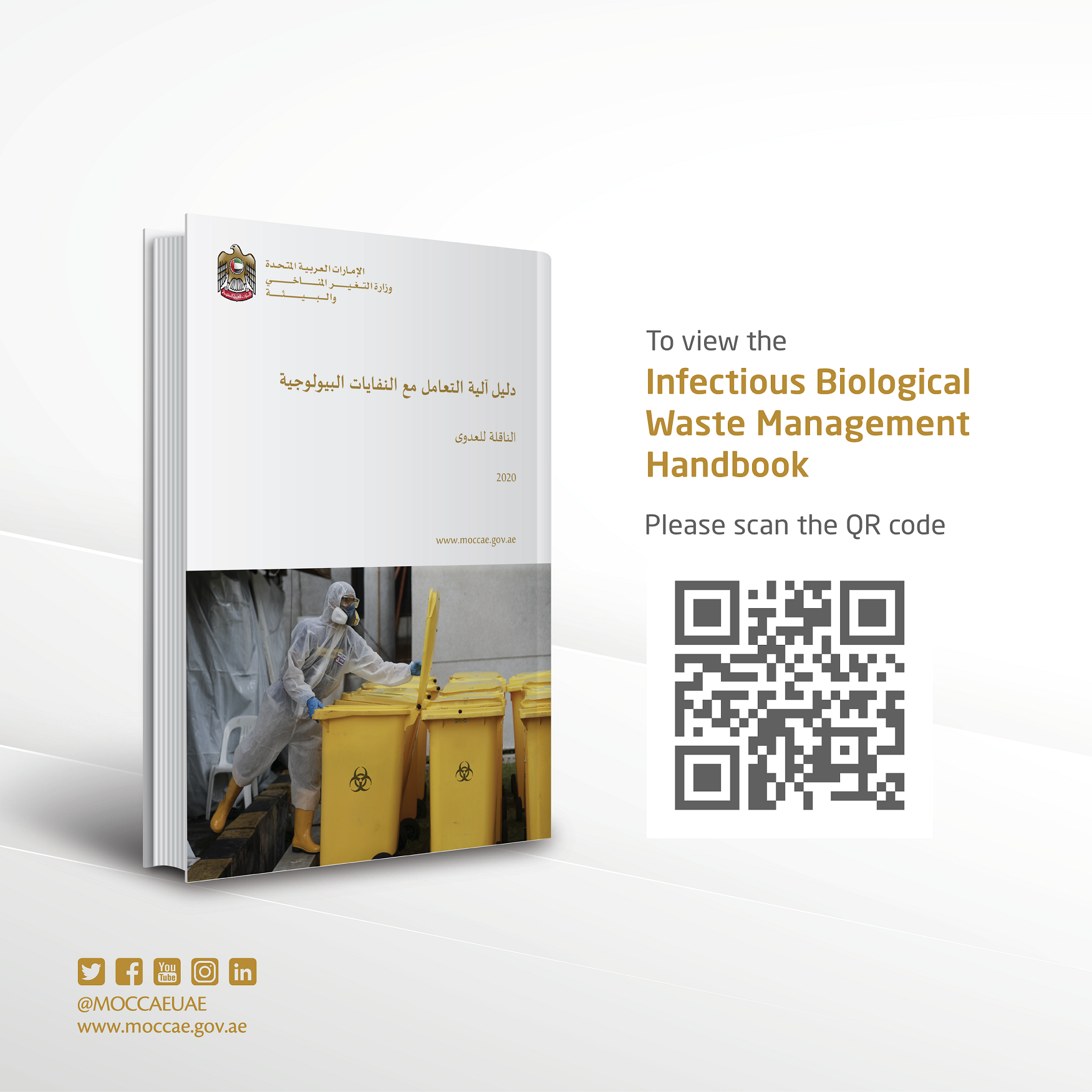The Ministry of Climate Change and Environment has released the third edition of the Infectious Biological Waste Management Handbook that outlines the standards and practices for safe handling, processing, and disposal of potentially infectious waste.
The handbook, only available in Arabic, comprises five sections. Topics cover the definition and classifications of infectious biological waste, associated risks, proper ways of handling and related precautions, as well as medical waste management rules and regulations.
The publication also contains a comprehensive guide on the disposal of waste generated during the diagnosis, isolation, and treatment of COVID-19 patients.
The document classifies infectious biological waste as hazardous waste, which is defined by the United States Environmental Protection Agency as waste with properties that make it dangerous or capable of harming human health or the environment. Under biological waste, it includes animal carcasses, plant and soil waste, infectious waste, medical chemical waste, and sharps waste.
Among the processes explained in the handbook are waste segregation, handling, storage, and disposal.
Segregation The handbook highlights the importance of segregating infectious biological waste at source, placing it in colour-coded bags to distinguish different types of waste, using a steriliser for soil and fertiliser waste and contaminated feed, double-bagging and tagging infectious waste, and disposing of sharps in containers made of rigid plastics.
Handling The document specifies a set of requirements that must be met at the waste site, such as sealing and replacing waste bags once they are 75 percent full, refraining from transporting and unloading biological waste in open carts, and adhering to the colour-coding system of waste bags.
Storage The handbook limits the storage time for biological waste to a maximum of five days in a refrigerator and 72 hours at room temperature. It lists 10 prerequisites for storage locations, including allocating a separate room for storage inside the laboratories but away from daily routine work activities, and placing signage on the door indicating a hazardous waste storage area.
Furthermore, it sets out the specifications for transporting biological waste outside of facilities, such as proper labelling, enclosing the required transportation documents, and delivering it only to authorised treatment facilities.
Disposal The procedures for disposing of solid and liquid biological waste in the UAE that protect public health and safety are described. It includes the precautions that must be taken during waste disposal and the responsibilities of the designated waste coordinator at the facility.
COVID-19 waste The handbook includes guidelines for the handling and disposal of waste generated during diagnosis, isolation, and treatment of COVID-19 patients. The guidelines are also applicable to other highly contagious diseases, such as HIV and H1N1.



